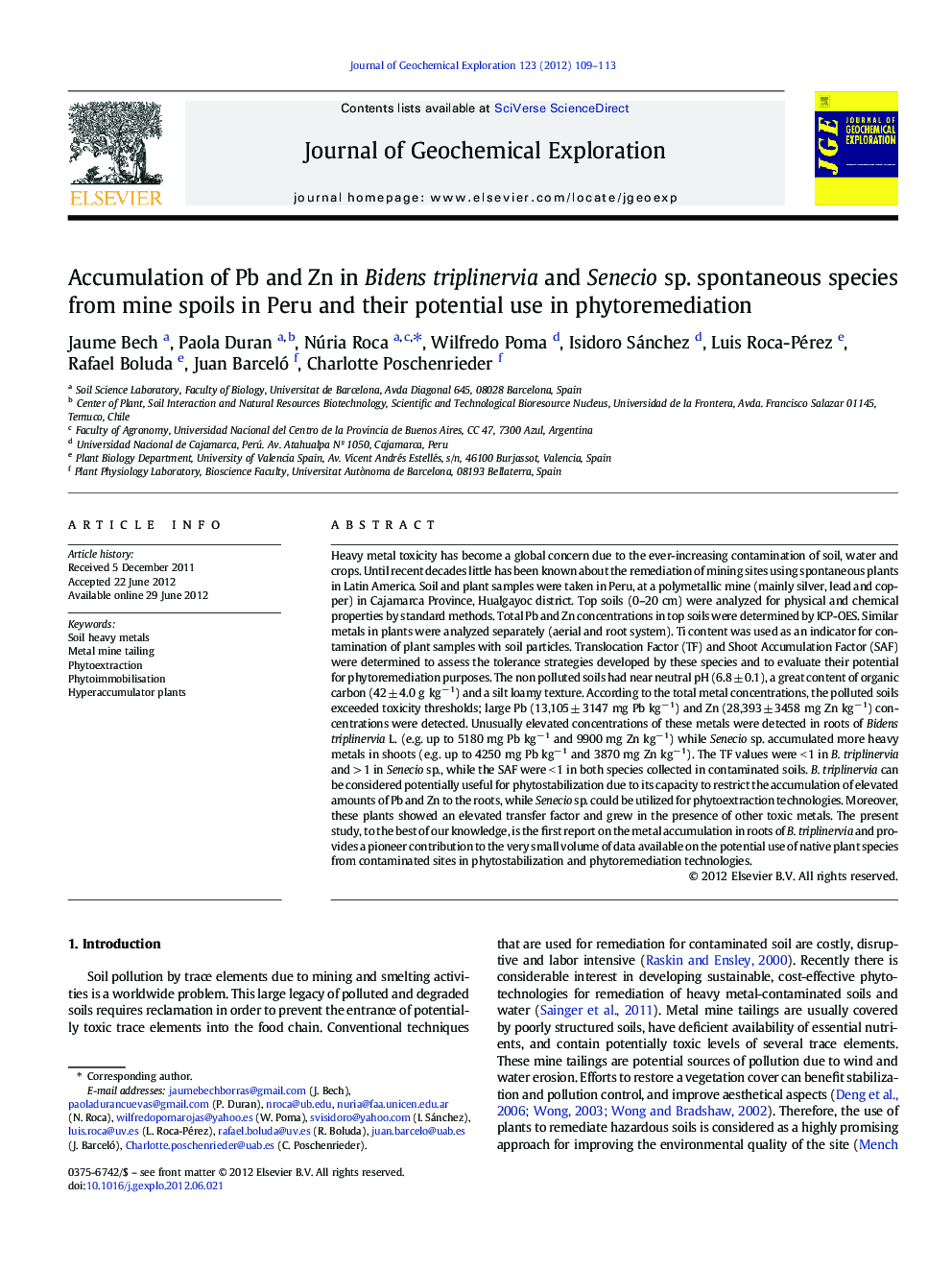| Article ID | Journal | Published Year | Pages | File Type |
|---|---|---|---|---|
| 4457572 | Journal of Geochemical Exploration | 2012 | 5 Pages |
Heavy metal toxicity has become a global concern due to the ever-increasing contamination of soil, water and crops. Until recent decades little has been known about the remediation of mining sites using spontaneous plants in Latin America. Soil and plant samples were taken in Peru, at a polymetallic mine (mainly silver, lead and copper) in Cajamarca Province, Hualgayoc district. Top soils (0–20 cm) were analyzed for physical and chemical properties by standard methods. Total Pb and Zn concentrations in top soils were determined by ICP-OES. Similar metals in plants were analyzed separately (aerial and root system). Ti content was used as an indicator for contamination of plant samples with soil particles. Translocation Factor (TF) and Shoot Accumulation Factor (SAF) were determined to assess the tolerance strategies developed by these species and to evaluate their potential for phytoremediation purposes. The non polluted soils had near neutral pH (6.8 ± 0.1), a great content of organic carbon (42 ± 4.0 g kg− 1) and a silt loamy texture. According to the total metal concentrations, the polluted soils exceeded toxicity thresholds; large Pb (13,105 ± 3147 mg Pb kg− 1) and Zn (28,393 ± 3458 mg Zn kg− 1) concentrations were detected. Unusually elevated concentrations of these metals were detected in roots of Bidens triplinervia L. (e.g. up to 5180 mg Pb kg− 1 and 9900 mg Zn kg− 1) while Senecio sp. accumulated more heavy metals in shoots (e.g. up to 4250 mg Pb kg− 1 and 3870 mg Zn kg− 1). The TF values were < 1 in B. triplinervia and > 1 in Senecio sp., while the SAF were < 1 in both species collected in contaminated soils. B. triplinervia can be considered potentially useful for phytostabilization due to its capacity to restrict the accumulation of elevated amounts of Pb and Zn to the roots, while Senecio sp. could be utilized for phytoextraction technologies. Moreover, these plants showed an elevated transfer factor and grew in the presence of other toxic metals. The present study, to the best of our knowledge, is the first report on the metal accumulation in roots of B. triplinervia and provides a pioneer contribution to the very small volume of data available on the potential use of native plant species from contaminated sites in phytostabilization and phytoremediation technologies.
► Plants accumulated high levels of metals from soils with near to neutral pH. ► Senecio sp. was able to accumulate more than 1000 mg kg− 1 of Pb. ► Senecio sp. showed efficient Pb and Zn translocation factors at the polluted site. ► Senecio sp. could be used as potential Pb hyperaccumulator. ► Bidens triplinervia accumulated elevated concentrations of Pb and Zn in the roots.
